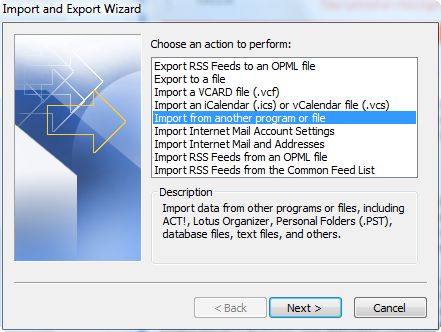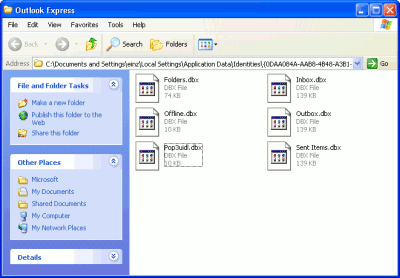We obviously know what email is, so this one’s going to be short. However, it’s how you use it that makes the difference. The difference between your company looking professional and looking like a fly-by-night operation. How many times have you seen an advertisement, sticker on a car or a business card that had a company name followed by an email address from hotmail.com or yahoo.com?
How much better would it look to have an email address from your company’s domain name? As an example, if you changed your email address from YourName001293@hotmail.com to YourName@YourCompany.com you just took your image to a whole new level.
changed your email address from YourName001293@hotmail.com to YourName@YourCompany.com you just took your image to a whole new level.
If you’ve been using an email address from a free web service, you need to change it now. And if you’re stuck on the idea that you can check your email anywhere there’s an Internet connection, you no longer have to worry with a service called IMAP. Let’s take a look at some differences in email services.
Types of email services
- POP3 – POP email is the most basic of email services that allows you to simply download your messages to a third party software program such as Outlook, Entourage or Thunderbird. This is a great advantage given the fact that your email is stored on your computer, but this can also be the downside because if you’re not around your computer, you won’t have access to it. The major drawback, however is that if have more than one computer and you download your email on one computer, you won’t have access to it on another.
- IMAP – IMAP allows you to use your third party software to map it to your email account(s) on the server. This means that all your emails are synced between your software and your server. You still need your computer and an Internet connection, but unlike POP3, your email isn’t moved from the server and therefore can be accessed on multiple computers that contain your mail settings. One drawback with IMAP is that your email always stays on the server until it’s deleted, which can fill up any storage quota you may have.
- Webmail – All web hosting plans and services you can buy come with free webmail services. This is the best choice for getting your email if you like the idea of being able to access email truly anywhere. This service works exactly like Hotmail or Yahoo!, but it may be limited in features. One of the only drawbacks with webmail would be storage limits. You can also use webmail and IMAP together since any changes you make on one or the other will affect both.
When running a business, you always want to be in contact with your customers. If you have to, get yourself a smartphone so your messages can come is as soon as they’re sent. After choosing your preferred way to get email, stick with it as you don’t want to become confused later or have email stored in more than one location.
| << Back to File Transfer Protocol (FTP) | Forward to PHP >> |



